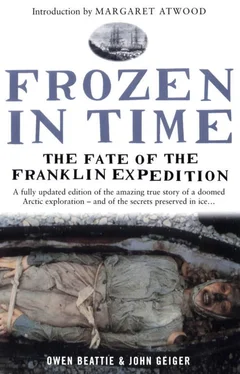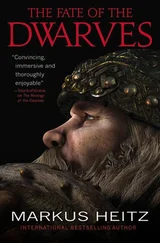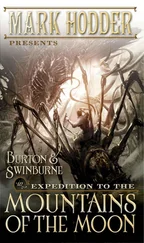Beattie and Savelle hoped to survey Starvation Cove, looking for relics or remains of the hardiest men from the doomed expedition, but the land is extremely low, marshy and sandy, and was almost completely covered by meltwater that summer, making such work all but impossible. The snowmobiles soon continued on, carrying the researchers a short distance north to a temporary Inuit fishing camp on Richardson Point. Dining that night on raw and boiled seal meat and raw caribou, they questioned their hosts about possible European gravesites on the south coast of King William Island. One possible site was described as lying on a high crest of land at Peabody Point, along their planned route.
The first actual survey work of the field season was conducted in the early morning the following day. A mist hung over the researchers as they walked over Richardson Point, which is just ⅔ mile (1 km) wide. Besides prehistoric and historic Inuit campsites (the locations of which were mapped by Savelle), nothing was found. Disappointed that any evidence of Franklin expedition crew members on the North American mainland remained hidden, the five-member survey team parted company with the Inuit hunters and crossed back over Simpson Strait to the southern coast of King William Island near Booth Point, hauling their supplies and equipment, including a canoe, themselves.
There, 1½ miles (2.5 km) west of Booth Point, they located the partial skeleton of the single individual from the Franklin expedition referred to in the 1869 expedition account of Charles Francis Hall. The unusual scatter of bones was found outside a tent circle associated with the expedition. It was a significant discovery, and it raised hopes that other Franklin remains would be located that summer. Once work at the Booth Point site was complete, the survey party then continued westward along the south coast of the island. (The grave identified by the Inuit fishermen they had visited at Richardson Point was located at Peabody Point, but it was actually an Inuit burial from the early 1900s. Because of its more recent origin, the remains were not investigated.)
At Tulloch Point, where in 1879 Frederick Schwatka had discovered what was believed to be a Franklin expedition grave, the researchers also found skeletal remains, though Beattie and Savelle would identify anatomical and cultural features that confirmed the skeleton was actually the mid-nineteenth-century remains of an adult Inuk male. Another burial site thought to have been of Franklin expedition origin, identified by Canadian explorer William Gibson in 1931, turned out to contain the remains of an adult Inuk female, also probably from the nineteenth century. Both of the latter sites were mapped and bone samples collected for further analysis. What became clear, though, was that at least some of what were Inuit graves had been mistaken for those of Franklin’s men by searchers, further confounding Beattie’s attempts to piece together the circumstances surrounding the expedition’s destruction.
On 5 July, as the research team surveyed the coastline west of Tulloch Point, the large white dome of the Distant Early Warning (DEW) Line Station at Gladman Point came into view—nearly 16 miles (25 km) away. It was strange to see this Cold War relic on the tundra. But such radar stations are not uncommon in the Canadian Arctic: twenty-one dot the landscape from Alaska to Baffin Island. Built in the 1950s as a line of defensive warning against air attack from the Soviet Union, the stations had been modernized in recent years and were continuing their function of maintaining sovereignty over Canada’s airspace.
After hours of hiking, the party reached a reasonably large, slow-moving river that required the use of their canoe to cross. Once on the other side, and within a few miles of the station, they began to set up camp. While Digby, Hiqiniq and Aleekee went about this routine task, Beattie and Savelle walked to the station. They were warmly greeted, and over the next day the tired crew were treated to hot coffee, fresh fruit and showers.
It was while they were visiting the station that they learned of an amazing coincidence. A few days prior to their arrival, one of the station personnel had, while hiking, discovered a moss-covered human skeleton on the tundra’s surface within a mile of the station. This discovery was reported to the closest Royal Canadian Mounted Police detachment at Spence Bay (today called Taloyoak). When Beattie and Savelle and their group arrived at Gladman Point, the constable stationed at Spence Bay was on his way in his small plane to investigate the discovery. When he arrived he met up with the surveyors, and Beattie and Savelle both accompanied the constable and station personnel when they went to view the bones. As it turned out, the skeleton was that of a prehistoric Inuk male. His remains had rested above ground for hundreds of years. It was remarkable that, considering the hundreds, perhaps thousands, of people who had been to the station during its construction and period of operation, the skeleton was discovered only a few days before a forensic anthropologist and archaeologist literally wandered up to the station’s front door.
The Gladman Point skeleton was the last to be found that summer. Beattie returned to Edmonton in late July, disappointed that the remains of only one of the 105 officers and men who has deserted the Erebus and Terror had been located. It was possible that the physical evidence of scurvy identified on the Booth Point remains would be one of few notable accomplishments of the 1981 survey. But it had been important to learn that previous searchers had almost certainly mistaken Inuit burials for those of Franklin’s sailors. In addition to the small contributions to the archaeological record made that summer, the historical record had at least been further clarified and corrected.
Tiny pieces of the bone samples collected from both the Franklin sailor’s skeleton and the Inuit skeletons were soon sent to a laboratory for trace element analysis. Use of such analytical techniques on skeletal remains is common, as various elements found in bone can provide information about problems in diet and possible deficiency disorders. Then, weeks later, while Beattie and Savelle redrew maps and reviewed field notes at the University of Alberta offices, the scatter of the bones found at Booth Point returned to bother them. For nearly all of the skull fragments had been found near a group of larger stones at what was identified as the entrance to the tent structure, while bones from the arms and legs were found more loosely scattered around the outside of the stone circle. What was initially thought to have been the remains of a sailor who had been left behind at a campsite, either near death or already dead, now began to reveal more ominous secrets.
In late September, when Beattie and Savelle were preparing the first report on the summer’s research, they were forced to acknowledge what had been implied by the evidence at the site from the beginning: They had found the first physical evidence to support Inuit accounts of cannibalism among the dying crewmen.
While studying the right femur found at the site, Beattie confirmed that three roughly parallel grooves measuring .02–.04 inches (.5–1 mm) in width and up to ½ inch (13 mm) in length had been cut into its back surface. The cut marks were made by a metal implement, suggesting intentional dismemberment. Fracture lines indicated that the skull had also been forcibly broken; the face, including both jaws and all the teeth, was missing. Evidence that the body had been intentionally dismembered was further supported by the selective parts of the skeleton found: the head, arms and legs. Besides the face, most of the skeleton was missing, including the twenty-four ribs, sternum (breastbone), all twenty-four vertebrae of the back, the three large bones of the hip (sacrum and two innominates), the two clavicles (collar bones) and the two scapulas (shoulder blades).
Читать дальше










